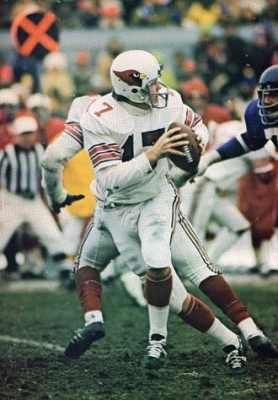Teams that are below-average at passing and stopping the pass are usually not very good. In the Super Bowl era, each additional yard of ANY/A (on either offense or defense) relative to league average increases a team’s winning percentage by about nine percent. The Cardinals, at -0.5 Relative ANY/A on offense and -1.7 RANY/A on defense, would therefore be expected to win about 30% of their games. Instead, the Cards won 68% of games, going 9-4-1.
The table below shows the 100 teams of the Super Bowl era that have most exceeded expectations based on Offensive and Defensive RANY/A. In general, using ANY/A and RANY/A will get you most of the way there with a team’s record, but not for these teams. The Cardinals had an Off RANY/A of -0.52, a Def RANY/A of -1.72, and therefore, an expected winning percentage of 0.296. By having an actual winning percentage of 0.679, the Cardinals exceeded expectations by 6.1 wins per 16 games.
The obvious question to ask, then, is why? Why were these Cardinals so successful despite struggling to pass and stop the pass? The Cards were good in one-score games — 4-0-1 — but St. Louis still had a points differential of +2.6 points per game. This wasn’t just a bad team that got lucky. There are a few reasons.
- The Cardinals were 4th in rushing yards, 4th in rushing first downs, 5th in yards per carry, and tied for 1st in rushing touchdowns. Fullback Willis Crenshaw led the way, but the Cardinals also benefited from TE Jackie Smith (12/163) and wide receiver Dave Williams (3/47) gaining 210 yards on just 15 carries. St. Louis had a great offensive line with Bob Reynolds, Irv Goode, Bob DeMarco, Ken Gray, and Ernie McMillan all making the Pro Bowl in either ’67 or ’68.
- On defense, St. Louis ranked between 4th and 6th in rushing yards, yards per carry, rushing touchdowns, and rushing first downs.
- The Cardinals also had great special teams. Chuck Latourette led the NFL in both punt return yards and kickoff return yards, while also leading the NFL in punt return average and ranking second in kickoff return average. Latourette added 135 yards of value as a punt returner and 251 yards of value as a kickoff returner.
- Opposing kickers against St. Louis hit just 15 of 33 attempts; that 45.5% rate was ten percent below the league average. Meanwhile, Jim Bakken made 15 of 24 attempts.
Passing is more than half of the game, but the running game and special teams can tilt things in a close game. The Cardinals went 9-4-1 in ’68, but the script flipped the following year: St. Louis went 4-9-1.

